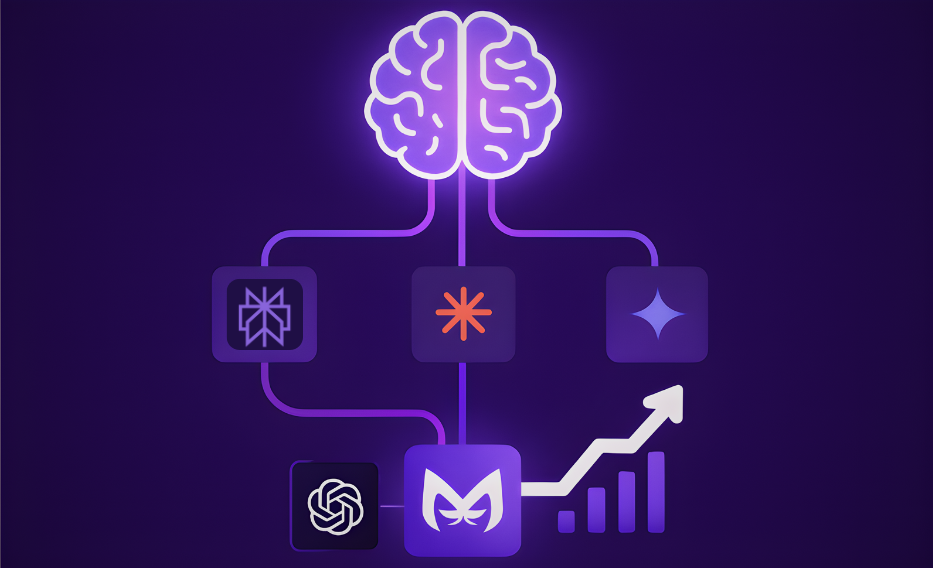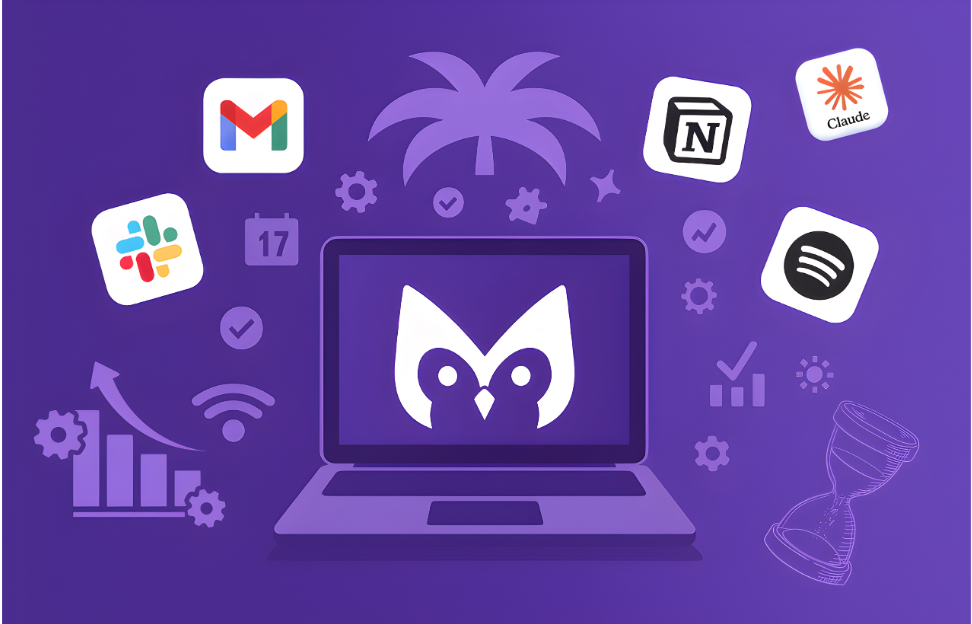Online business growth isn’t just about increasing revenue. It’s about building a sustainable system that attracts customers, keeps them engaged, and turns them into advocates. Whether you’re running an e-commerce store, SaaS platform, or service business, the strategies you choose determine whether you plateau at $100K or scale past seven figures.
This guide covers the frameworks, channels, and metrics that successful online businesses use to grow predictably. You’ll learn which strategies work for your business model, how to measure what matters, and how to avoid the mistakes that stall 70% of digital businesses before they hit their second year.
What Is Online Business Growth?
Online business growth is the measurable increase in revenue, customer base, and market presence achieved through digital channels. It encompasses customer acquisition, retention improvements, average order value optimization, and geographic or product line expansion.
Real growth combines three elements: more customers finding you, more customers buying from you, and existing customers buying more often. A business adding 100 new customers monthly while losing 95 isn’t growing. It’s treading water. True growth means your customer base compounds over time, your revenue per customer increases, and your profit margins improve as you scale.
The key difference between online and traditional business growth is measurability. Every click, conversion, and customer interaction generates data. You can track exactly which marketing channel brought in Customer #247, what they bought, and what their total lifetime value will be. This data advantage lets you make faster, smarter decisions about where to invest your growth budget.
What Is the Success Rate of an Online Business?
Approximately 20% of online businesses fail within the first year, according to U.S. Bureau of Labor Statistics data, though failure rates reach nearly 50% by year five. These statistics mask important nuances about what drives success versus failure. Businesses with a documented growth strategy have a 55-60% higher survival rate than those operating without clear plans.
Success rates vary significantly by business model. SaaS companies that achieve product-market fit have 5-year survival rates above 70%. E-commerce businesses selling commodity products face steeper competition and lower margins, resulting in 60-65% failure rates in year one.
The primary factors separating successful online businesses from failures include sufficient startup capital, clear target market definition, proven customer acquisition channels before scaling, and willingness to pivot based on market feedback. Businesses that test their market with minimum viable products, track metrics religiously, and adjust quickly have dramatically better outcomes.
Core Online Business Growth Strategies That Actually Work
Effective online business growth combines four core strategies: organic traffic acquisition, paid customer acquisition, conversion rate optimization, and retention marketing. Each strategy serves a specific purpose in your growth system.
Organic strategies like SEO and content marketing build long-term assets that generate customers without ongoing ad spend. These take 6-12 months to gain traction but create compounding returns. One well-ranking article can drive thousands of visitors monthly for years.
Paid acquisition through Google Ads, Facebook, or other platforms provides immediate traffic and rapid testing capability. You’ll know within 30 days whether your offer converts profitably. The challenge is maintaining positive unit economics as platforms become more competitive.
Conversion optimization multiplies the effectiveness of both organic and paid channels. Improving your conversion rate from 2% to 3% means 50% more customers from the same traffic. Small wins compound into significant revenue gains.
Retention marketing keeps customers engaged and buying repeatedly. Acquiring new customers costs 5-7x more than selling to existing ones. Email sequences, loyalty programs, and community building transform one-time buyers into repeat customers who refer others.
Building Your Professional Website
Your website serves as your digital storefront, operating 24/7 to attract and convert customers. Modern website builders like Squarespace, Wix, and WordPress simplify creating professional sites without coding knowledge.
Focus on these essentials: a clear homepage explaining what you do and what sets you apart, key services and pricing information, portfolio or product gallery if applicable, prominent contact information, and compelling calls-to-action guiding visitors toward conversion.
Ensure your site works flawlessly on mobile devices. Over 60% of web traffic comes from smartphones and tablets. Page speed directly impacts conversions. Sites loading in under 3 seconds convert significantly better. Compress images, minimize code, and choose reliable hosting.
Search Engine Optimization for Sustainable Growth
SEO generates organic traffic by helping your pages rank in Google search results for terms your target customers search. Unlike paid advertising, SEO creates lasting value. Top-ranking pages can drive traffic for years without additional investment.
Effective SEO starts with keyword research identifying terms your customers actually search. Tools like SEMrush, Ahrefs, or Google’s Keyword Planner help you find keywords with sufficient search volume and achievable competition levels. Target a mix of high-volume competitive terms and longer phrases with less competition.
On-page optimization ensures Google understands your content. Include target keywords in titles, headings, and naturally throughout your content. Focus on creating genuinely helpful content that thoroughly answers searcher questions. Google’s algorithms increasingly reward expertise, depth, and user satisfaction over keyword density.
Technical SEO covers site speed, mobile responsiveness, and crawlability. Core Web Vitals directly impact rankings. Use Google Search Console to identify and fix technical issues preventing your pages from ranking.
Link building remains crucial for competitive keywords. Earn backlinks through original research, expert commentary, digital PR, and creating genuinely link-worthy resources. Results typically appear after 3-6 months of consistent effort, with significant traction at the 9-12 month mark.
Social Media Marketing for Business Growth
Social media platforms provide cost-effective ways to reach target audiences, build brand awareness, and drive traffic to your website. The average person uses nearly 7 different social networks monthly and spends over 2 hours daily on social media.
Choose platforms where your target audience already spends time. Facebook works well for B2C businesses targeting broad demographics. Instagram suits visual brands like fashion, food, and lifestyle businesses. LinkedIn excels for B2B companies and professional services.
Setting up professional business accounts provides access to analytics and promotional tools. Facebook Business Accounts enable targeted advertising. Instagram business accounts provide insights. LinkedIn Company Pages showcase your organization and services.
Content strategy matters more than posting frequency. Share valuable information beyond product promotion. Keep posts concise: 40-80 characters work well on Facebook, videos under 20 seconds perform best. Tools like Hootsuite, Buffer, or Later let you schedule posts across multiple platforms, saving time while maintaining consistent presence.
Paid social advertising accelerates growth when organic reach plateaus. Facebook and Instagram ads offer sophisticated targeting by demographics, interests, and behaviors. Start with small budgets testing different creative and targeting options.
Video Marketing and Online Reviews
Video content generates higher engagement rates than text or static images. Keep videos brief and focused: 7-20 seconds on Instagram and Facebook for maximum engagement. Include target keywords in video titles, descriptions, and tags for better search visibility.
Online reviews significantly influence purchase decisions. According to a 2023 study, 98% of consumers consider reviews essential when making buying decisions. Encourage satisfied customers to leave reviews on Google, Facebook, Yelp, and industry-specific platforms.
Respond to all reviews promptly and professionally. Thank customers for positive reviews. Address negative reviews with empathy, acknowledging concerns and offering solutions. Display testimonials prominently on your website and social media.
How Online Communities Drive Business Growth
Online communities create spaces where your customers connect with each other and your brand. They transform transactions into relationships, turning customers into advocates who actively promote your business.
Communities provide multiple growth benefits. Members engage with your brand regularly, increasing lifetime value. They generate user-generated content through questions, reviews, and discussions. Community members refer others because people trust recommendations from peers more than advertising.
Choose community platforms based on where your audience already gathers. Facebook Groups work well for B2C brands. Slack or Discord communities suit B2B and tech audiences. Growing communities requires active facilitation. Seed discussions with valuable questions. Recognize helpful members. Create exclusive perks like early access or special content.
Email Marketing for Customer Retention
Email marketing delivers the highest ROI of any digital channel at approximately $42 for every dollar spent. It’s your direct line to customers, unaffected by algorithm changes or rising ad costs.
Build your email list through website opt-ins, lead magnets, and checkout subscriptions. Offer clear value in exchange for email addresses like downloadable guides, discount codes, or exclusive content.
Welcome sequences introduce new subscribers to your brand. Send 3-5 emails over the first two weeks covering your story, best content, and initial offers. Segment your list based on behavior, purchase history, and engagement levels. Segmented campaigns generate 50-100% higher click-through rates than broadcast emails, according to research from Mailchimp and HubSpot.
Automated sequences run on autopilot while delivering personalized experiences. Set up abandoned cart emails, post-purchase follow-ups, re-engagement campaigns, and birthday offers. Comply with email regulations like the CAN-SPAM Act requiring clear identification, accurate subject lines, and functioning unsubscribe mechanisms.
Paid Advertising for Accelerated Growth
Paid advertising provides immediate traffic and fast validation of your offers. Google Ads captures search intent by showing ads when people search for products like yours. This bottom-of-funnel traffic converts well but faces heavy competition.
Facebook and Instagram ads excel at awareness and consideration stages. Their targeting capabilities let you reach specific demographics, interests, and behaviors. Use compelling visuals and clear value propositions.
Profitability depends on unit economics. Calculate your customer acquisition cost and compare it to customer lifetime value. You need CLV at least 3x higher than CAC for sustainable paid acquisition. Start with $50-100 daily budgets. Identify profitable campaigns, then increase spend gradually while monitoring performance.
How Do You Measure Online Business Growth?
Measuring growth requires tracking metrics across acquisition, activation, retention, revenue, and referral. This AARRR framework reveals different aspects of business health.
Acquisition metrics show how many new prospects discover your business. Track website traffic, email subscribers, and social followers. Break down traffic by source like organic search, paid ads, social media, and referral.
Retention indicates whether customers stick around. Calculate monthly or annual churn rates. Track repeat purchase rates for e-commerce or subscription renewal rates for recurring revenue businesses.
Revenue metrics include monthly recurring revenue, average order value, and customer lifetime value. Calculate CLV by multiplying average purchase value by purchase frequency and customer lifespan. This number determines how much you can afford to spend acquiring customers.
Different business models require different KPIs. E-commerce businesses focus on traffic, conversion rate, AOV, and repeat purchase rate. SaaS companies track MRR, churn rate, expansion revenue, and net revenue retention. Service businesses monitor lead volume, consultation booking rate, proposal close rate, and project value.
How Do Online Banks Support Business Growth?
Online banks provide digital-first banking services designed for internet businesses. They integrate directly with e-commerce platforms, accounting software, and payment processors, automating financial operations that traditional banks handle manually.
Real-time financial visibility helps you make faster decisions. See sales, refunds, and cash position updated instantly rather than waiting for bank statements. Many online banks categorize transactions automatically and generate reports showing profitability by product or channel.
Faster payment processing improves cash flow. Traditional banks hold deposits for 3-5 business days. Online banks often provide next-day or same-day access, letting you reinvest revenue into inventory or advertising more quickly.
Popular options include Mercury, Brex, Novo, and Found for US businesses. Evaluate based on fee structures, integration capabilities, customer service quality, and features matching your specific needs.
What Is the Fastest Growing Online Business Model?
SaaS businesses currently show the fastest average growth rates, with successful companies often achieving 100-300% year-over-year revenue growth in early stages. The subscription model creates predictable recurring revenue and higher valuations than one-time transaction businesses.
SaaS growth stems from several advantages. Monthly or annual subscriptions generate predictable cash flow. High gross margins of 70-90% allow aggressive investment in customer acquisition. Digital delivery scales globally without inventory or shipping logistics.
Other fast-growing models include digital courses and education, subscription e-commerce boxes combining recurring revenue with physical products, and B2B marketplaces benefiting from network effects. Choose your model based on your strengths, not just growth potential. Success comes from excellent execution in your chosen model, not chasing trends.
Creating Your Online Business Growth Plan
A growth plan documents your current state, sets specific targets, and outlines the strategies and tactics to close the gap. Without a written plan, growth efforts scatter across random tactics that rarely compound into meaningful results.
Start with a comprehensive audit of your current performance. Document your revenue, traffic sources, conversion rates, customer acquisition costs, and retention metrics. Identify your strongest and weakest areas.
Set specific 12-month goals using the SMART framework. Goals should be Specific, Measurable, Achievable, Relevant, and Time-bound. “Grow revenue” is vague. “Increase monthly revenue from $50,000 to $85,000 by December through SEO content creation and email automation” provides clarity and direction.
Choose 2-3 primary growth strategies based on your audit. Most businesses succeed by focusing deeply on fewer channels rather than spreading thin across many tactics. Create quarterly milestones breaking annual goals into achievable chunks. Review progress monthly and adjust tactics based on what’s working.
Common Online Business Growth Mistakes
The most expensive mistake is scaling before achieving product-market fit. Many businesses pour money into advertising before validating that customers genuinely want their product. Test with small budgets first. Ensure customers return and refer others before spending aggressively on acquisition.
Ignoring retention while focusing purely on acquisition creates a leaky bucket. You can’t grow profitably if 80% of customers never buy again. Calculate your repeat purchase rate monthly. If it’s declining, pause acquisition spending and fix retention first.
Tracking vanity metrics instead of business metrics feels good but doesn’t build value. Social media followers and email subscribers matter only if they convert to customers. Focus on revenue, profit, and customer lifetime value.
Expecting immediate results from long-term strategies kills promising initiatives prematurely. SEO takes 6-12 months. Content marketing needs consistent publishing for 9+ months. Community building requires 12-18 months to achieve critical mass. Commit to strategies long enough to see results.
Working with an Online Business Growth Coach
Growth coaches provide expertise, accountability, and outside perspective on your business challenges. They’ve seen patterns across dozens or hundreds of businesses, recognizing problems and opportunities faster than operators immersed in day-to-day execution.
Consider hiring a coach when you’re stuck at a growth plateau despite consistent effort, uncertain which strategies to prioritize, or making the same mistakes repeatedly. Coaches cost $200-$500+ per hour or $2,000-$10,000+ monthly for ongoing advisory.
Look for coaches with demonstrated success in your specific business model. E-commerce growth differs from SaaS growth. Ask for case studies showing how they’ve helped similar businesses. Calculate expected ROI before hiring.
FAQ
How long does it take to see online business growth results?
Timeline varies by strategy. Paid advertising shows results within 1-2 weeks. Email marketing campaigns generate returns in 2-4 weeks. SEO and content marketing require 6-12 months for significant traction.
Can you grow an online business without paid advertising?
Yes, many successful online businesses grow entirely through SEO, content marketing, and organic social media. Organic strategies take longer to scale but build lasting assets.
What’s a realistic growth rate for an online business?
Early-stage businesses achieving product-market fit often grow 10-20% monthly. Mature businesses growing 20-40% annually are performing well.
How much should you invest in online business growth?
Allocate 10-20% of revenue to marketing and growth during early stages. Mature, profitable businesses often spend 15-25% of revenue on customer acquisition.
What metrics matter most for a new online business?
Focus on customer acquisition cost, customer lifetime value, and the ratio between them. You need CLV at least 3x CAC for sustainable growth.
Should you focus on one growth channel or diversify?
Master one channel first, then diversify. Once a channel delivers consistent results, add a second channel. Mature businesses typically have 3-5 core channels driving most growth.




